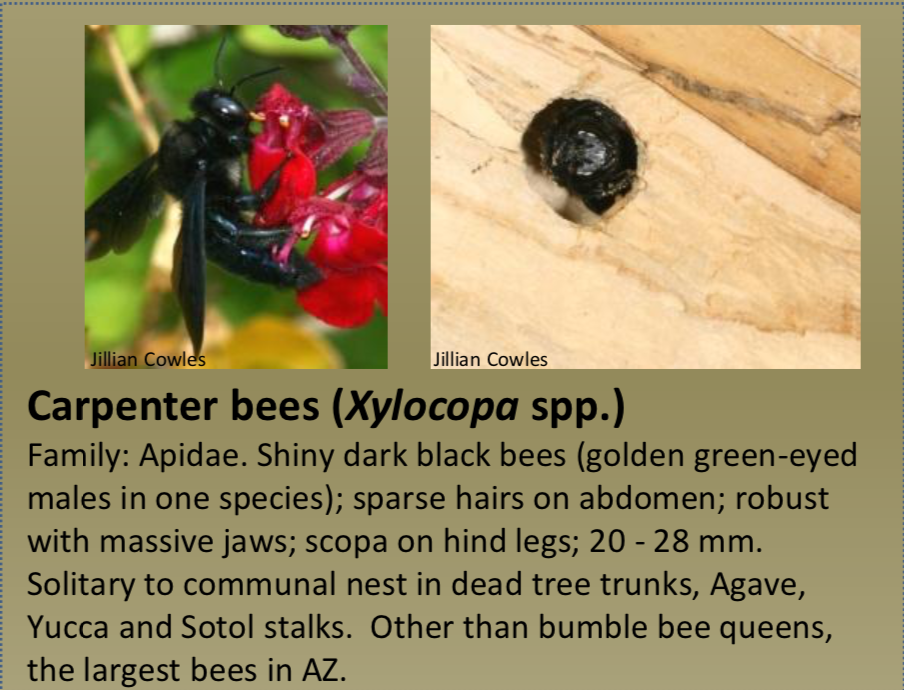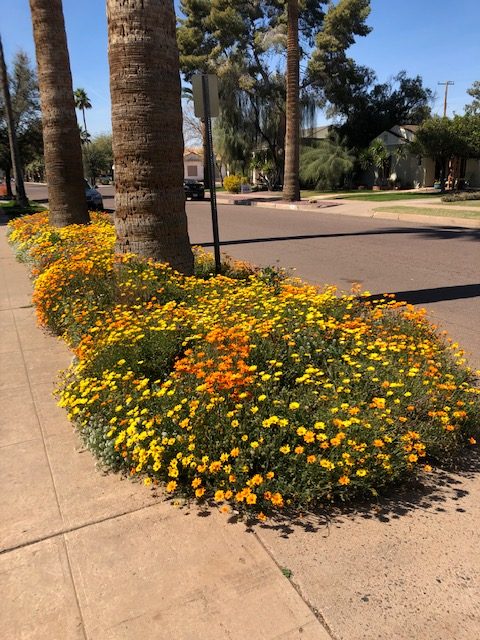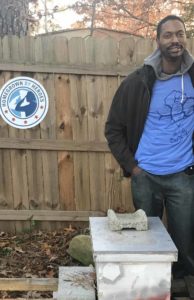Do Not Fear the Bee
As a big-ol sustainability, gardening and composting nerd, I’m concerned about the decline of bee populations in the United States.
I think we are closing in on a solution to the problem. In the meantime, I wanted to share some thoughts that I learned from my friend and entomologist, Chelsea, who studies bees, specifically.

Before I tell you what I learned from her, I encourage you to have a look at 12 Reasons Not to Be Afraid of Honeybees. While you may not want a bee colony in your shed, there are two things to keep in mind: you have to work hard to annoy them enough that you get stung and there are companies out there that will take those bees without killing them.
So, on to what I learned. First, we could do ourselves a great service by supporting native desert bees. One third of what you eat relies on bees.
It’s a little-known fact that the bees we commonly think of are not native to Arizona. Chelsea calls them “the chicken of the insect world” in that we have cultivated them to help us produce the honey that we want.

However, there are desert bees that could help replace the declining population of bees that we are hearing about. There’s one really great thing about those: while they do have stingers, they are very unlikely to sting sting. But they do pollinate the many plants that we rely on.
Second, there are things that you can do to encourage these bees to create homes, or “hotels” and other things that you can do to give them the food that they need. For instance, you can plant wildflowers in your yard. I’m particularly proud of mine, and they are visited by various types of bees every day.

It is notable that native bee species don’t make hives. They are generally solitary or subsocial – so they make “nests” where they line a hole in wood or twigs with mud (mason bees), leaves (leaf cutter bees), or wax (carpenter bees), then they lay one egg and provision it with a pollen ball. Then they fly away. – not often caring for their babies.
With the “bee hotel”, you are providing them “nesting spots” – not quite hives. But you can set out or hang wood with little holes in which for them to nest.
Lloyd Hardrick, a contributor to Urban Farm U, gives great insight in to keeping urban bees in this podcast. He handles honeybees, but he has some great insight to share.

My flowers are providing pollen for bee hives, and thus supporting their populations.
You are welcome, bees.
So, Chelsea and I are hatching an idea of setting up a native bee population in my back yard. Stay tuned. We may get this together with a little video to explain.
Stay tuned. Bee cool. Bees are our friends…

